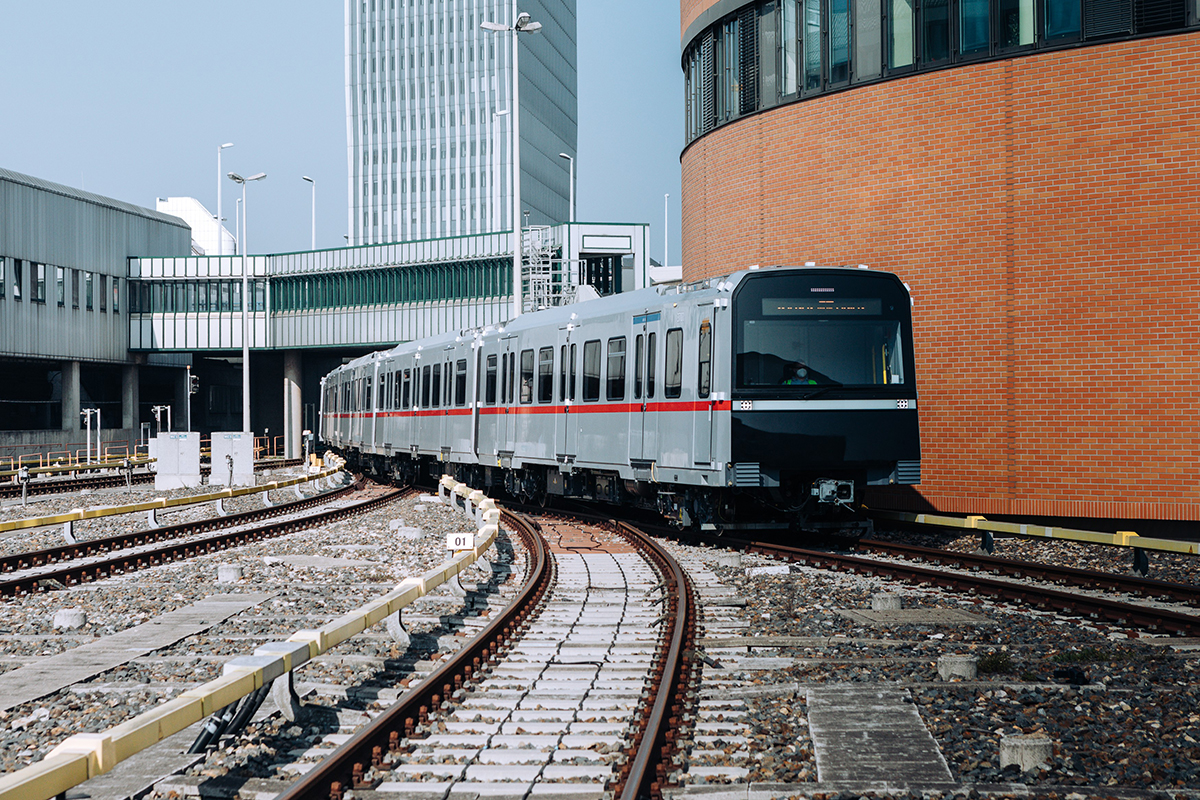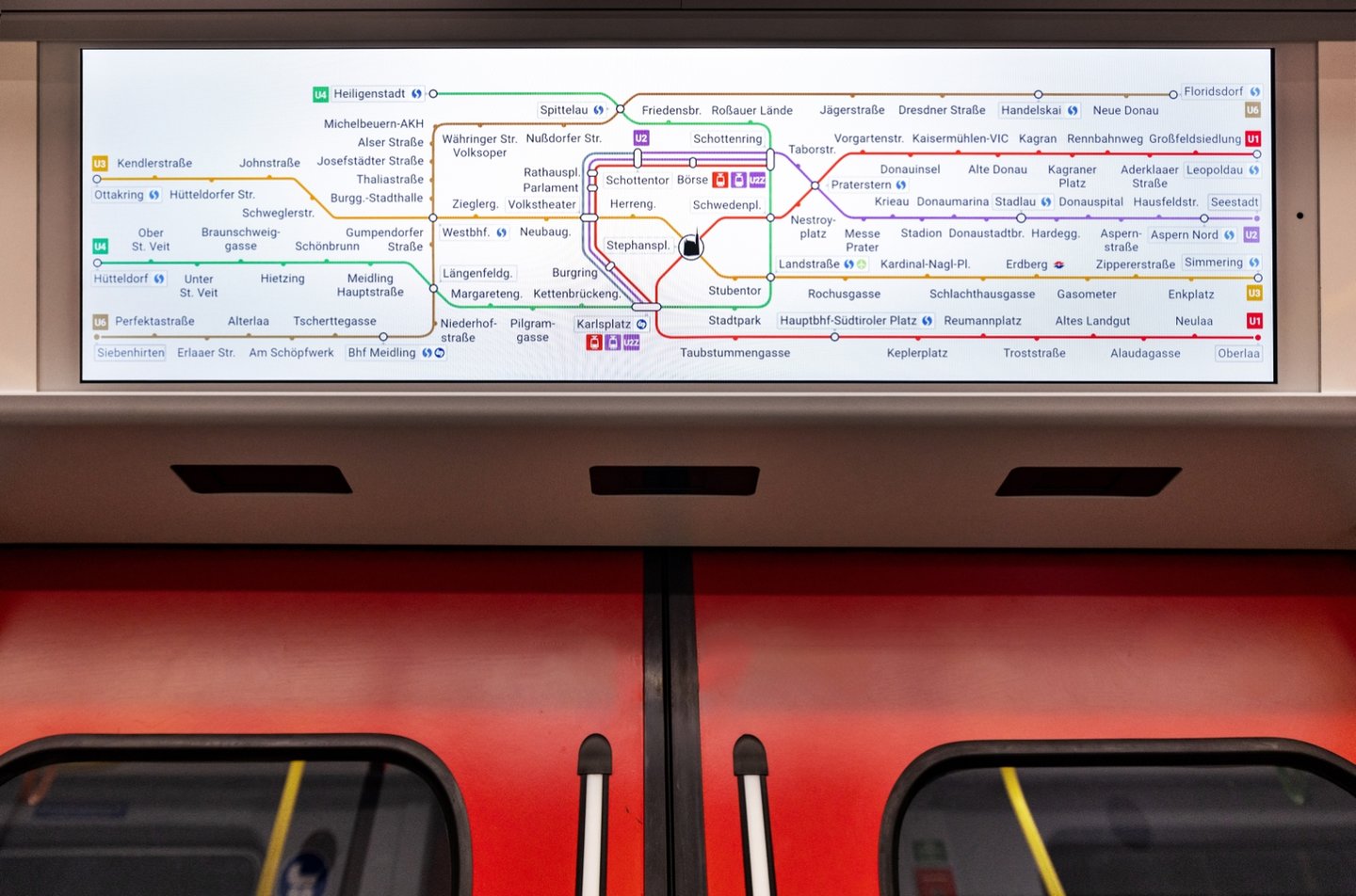Feature
The tech onboard Vienna U-Bahn’s new Siemens X-Wagen
Siemens will supply 34 six-car X-Wagen trainsets to Wiener Linien for the Vienna U-Bahn, with plans for driverless operations in the future. Peter Nilson reports.

An X-Wagen train during testing in 2021. Credit: Siemens Mobility
The new Siemens X-Wagen metro train has commenced passenger service operations on the Vienna Metro in Vienna, Austria.
The trains can operate with or without a train driver, with plans for them to eventually commence driverless automated operation on the metro.
After undergoing extensive tests and receiving its operating permit, the first train of the third-generation of X-Wagen trains officially began service on the U3 line of the Vienna U-Bahn metro system on 16 July.
Modernising Vienna's U-Bahn
Siemens Mobility is understood to be delivering ten trains to Vienna Linien, the company that operates the majority of Vienna’s public transport network, by the end of the year. The rolling stock manufacturer will then hand over up to three more X-Wagen metro trains per year to Wiener Linien.
“This is a great day for Vienna and the Viennese public transport system. The X-Wagen metro is trendsetting for our climate model city," said Peter Hanke, Vienna city councillor for public transport during the launch event.
"A sophisticated train with state-of-the-art technical solutions included and produced in Vienna makes public transport even more attractive and comfortable.”

Peter Hanke, Vienna city councillor for public transport (L), Gudrun Senk, CTO of Wiener Linien (C), and Albrecht Neumann, CEO of rolling stock at Siemens Mobility (R) welcome the first X-Wagen metro enters passenger service. Credit: Siemens Mobility
The new X-Wagen metro trains feature a new passenger information system, which has been tailored to meet the specific requirements of Vienna’s public transport system. Continually updated information is displayed to passengers on screens above all doors inside the X-Wagen metro.
This is part of a contract agreed in September 2017, under which Siemens Mobility will supply 34 six-car trainsets to Wiener Linien and maintain them for 24 years. The contract also comes with an option to supply 11 more trains.
New tech on the X-Wagen
“We are modernising our train fleet with the new X-Wagen metro,” said Gudrun Senk, CTO of Wiener Linien at the launch.
“[The X-Wagen] will replace the Silver Arrow trains and, beginning in 2026, enable fully automated metro operation in Vienna for the first time, on the U5 line. Together with the entire project team, I am delighted that the new X-Wagen metro can now be used by all passengers.”
Onboard the X-Wagen, Screens above the doors will show the direction of the station’s exits, other lines for transfers, and the departure times for those lines. They also display a digital network map with the train’s current location, the direction of travel, the next stop, and important transfer options.
By introducing the X-Wagen metro, the city of Vienna is taking a big leap into the future of digitalised transport.
Additional information, such as planned operating restrictions in the metro system or out-of-service station elevators, can also be displayed.
The X-Wagen also feature a new airless braking system. The brakes are controlled by a purely electronic signal, brake-by-wire, which is sent from the brake control unit to the intelligent actuator – the brake calliper.
By eliminating the compressed air components under the carriage, weight and installation space are saved at reduced costs over the entire life cycle, according to Siemens.
“By introducing the X-Wagen metro, the city of Vienna is taking a big leap into the future of digitalised transport,” said Albrecht Neumann, Siemens Mobility rolling stock CEO at the launch ceremony.
“Innovations like the new passenger information system with real-time updates and the air-free brake system are making their world debut, and the fully automated operation coming later on the U5 line will provide great benefits.”
Vienna Linien says that by the start of 2026, the U5 line between Karlsplatz and Frankhplatz will become Vienna’s first fully automated metro line, operating with driverless X-Wagen trains.
To prepare for this change, the metro operator will equip stations from Karlsplatz to City Hall with platform screen doors and the Frankhplatz station will be rebuilt.
Comfort, security, and accessibility
The new X-Wagen trains are designed with an open-plan interior, featuring spacious entry areas that will help speed up boarding and exiting trains according to Vienna Linien.
Each 111-metre train can carry 928 passengers, which is 46 more than the current V-metro train it is replacing. Siemens says that space has been set aside onboard for Passengers’ buggies and luggage. The doors also feature automatic folding ramps for accessible level boarding.

Digital screens above the doors on the X-Wagen show the network map of the Vienna U-Bahn. Credit: Vienna Linien/Alexandra Gritsevskaja
The seats are made of high-quality plywood and are arranged in a combination of standard transverse rows with additional seating along the sides, as well as folding seats. Blue seats indicate priority seating and are designated for passengers with reduced mobility.
With the beginning of passenger operations, the maintenance contract between Wiener Linien and Siemens Mobility for the X-Wagen metro also took effect.
Digital servicing based on Siemens’ rail asset management suite Railigent X will assist “future-orientated maintenance” by Wiener Linien. Railigent X is part of the open, digital business platform, Siemens Xcelerator, that enables customers to accelerate their digital transformation easier, faster and at scale.